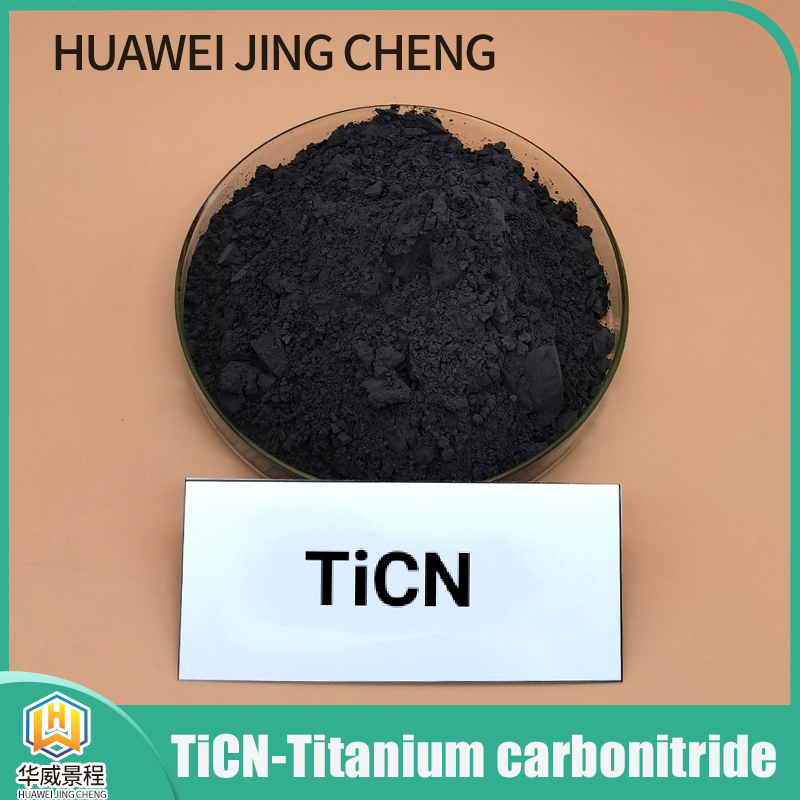Cermet is a particle-reinforced composite material composed of metallic phase (transition metals such as Fe, Co and Ni) and ceramic phase. Its performance is between ceramic and WC-based cemented carbide, and can be used for high-speed cutting of various steels.. Among them, the research of Ti(C,N) (titanium carbonitride)-based cermet originated in the 1970s, and it is a new type of cermet material developed on the basis of WC-based ceramic metal and TiC-based cermet. It has high strength, high hardness and excellent high temperature resistance and wear resistance.
From the name alone, Ti(C,N) seems to have a very close relationship with TiC and TiN, and it is indeed the case. Generally speaking, Ti(C,N) is made by mixing Ti(C,N) powder or TiC+TiN powder and binder phase powder (Ni, Co, etc.), plus other carbide additives, and then firing. TiC and TiN, as the basis of Ti(C,N), belong to the sodium chloride crystal structure of the face-centered cubic lattice, and can form Ti(C1-x,Nx)(0 <x<1) continuous solid solution.
Because the lattice constant of powder TiN is slightly smaller than that of TiC, the lattice constant a of Ti(C1-x, Nx) solid solution decreases linearly with the increase of nitrogen content x. Because the electrical conductivity and thermal conductivity of TiN are greater than TiC, but the microhardness is worse than TiC, so Ti(C1-x,Nx) will decrease with the increase of nitrogen content, and electrical conductivity and thermal conductivity Increase.
In recent years, the strength of Ti(C,N)-based cermets has been continuously improved, from 700~800MPa to 1800~2000MPa. The presence of TiN increases the temperature at which the liquid phase appears in the alloy during sintering. When sintering at the same temperature, the mutual diffusion of Ti and Mo through the liquid phase is restricted, and the precipitation and growth of crystal grains are inhibited. The increase of Mo concentration and the decrease of Ti concentration in the liquid phase also inhibit the formation of brittle mesophases, so that Ti(C,N)-based cermets can obtain higher strength and fracture toughness than traditional TiC-based alloys.
Application range of Ti(C,N)
Because Ti(C,N) has the advantages of high melting point, high hardness, good corrosion resistance and oxidation resistance, it is widely used in the preparation of high-speed cutting tools, molds and other block and structural materials, as well as coating materials on metal surfaces, etc,. Among them, the tool is the most important application direction of Ti(C,N).
As a tool material, Ti(C,N)-based cermet fills the gap between hard tools and ceramic tools. And because the main raw material of Ti(C,N)-based cermet tool materials is titanium, the storage capacity of titanium on the earth is 70 times that of tungsten, the main raw material of traditional WC-based cemented carbide tool materials, so it also has been valued by countries all over the world.
Compared with WC-Co series cemented carbide tools, Ti(C,N)-based cermet tools have good chemical stability, wear resistance and machinability, as well as a very low coefficient of friction with the metal, stronger ability to resist crescent crater wear, and is beneficial to improve the surface finish of the processed workpiece and control the dimensional accuracy, and the cost is also lower than that of WC-Co series cemented carbide tools.
At present, Ti(C,N) has been used to a considerable extent in the field of cutting and processing, and is gradually replacing TiC-based cermets. With low friction coefficient, high wear resistance and stable high temperature performance, it can also be used for high temperature parts of various engines, such as impeller root flanges, small bearings, valve seats, valves, etc. Because Ti(C,N) also has good acid corrosion resistance (better than YG8 cemented carbide), it can be used in chemical fiber and petrochemical industries, such as seal rings and valves. In short, the application potential of Ti(C,N)-based cermets is considerable, and it is believed that it will have more room for development in the future.
